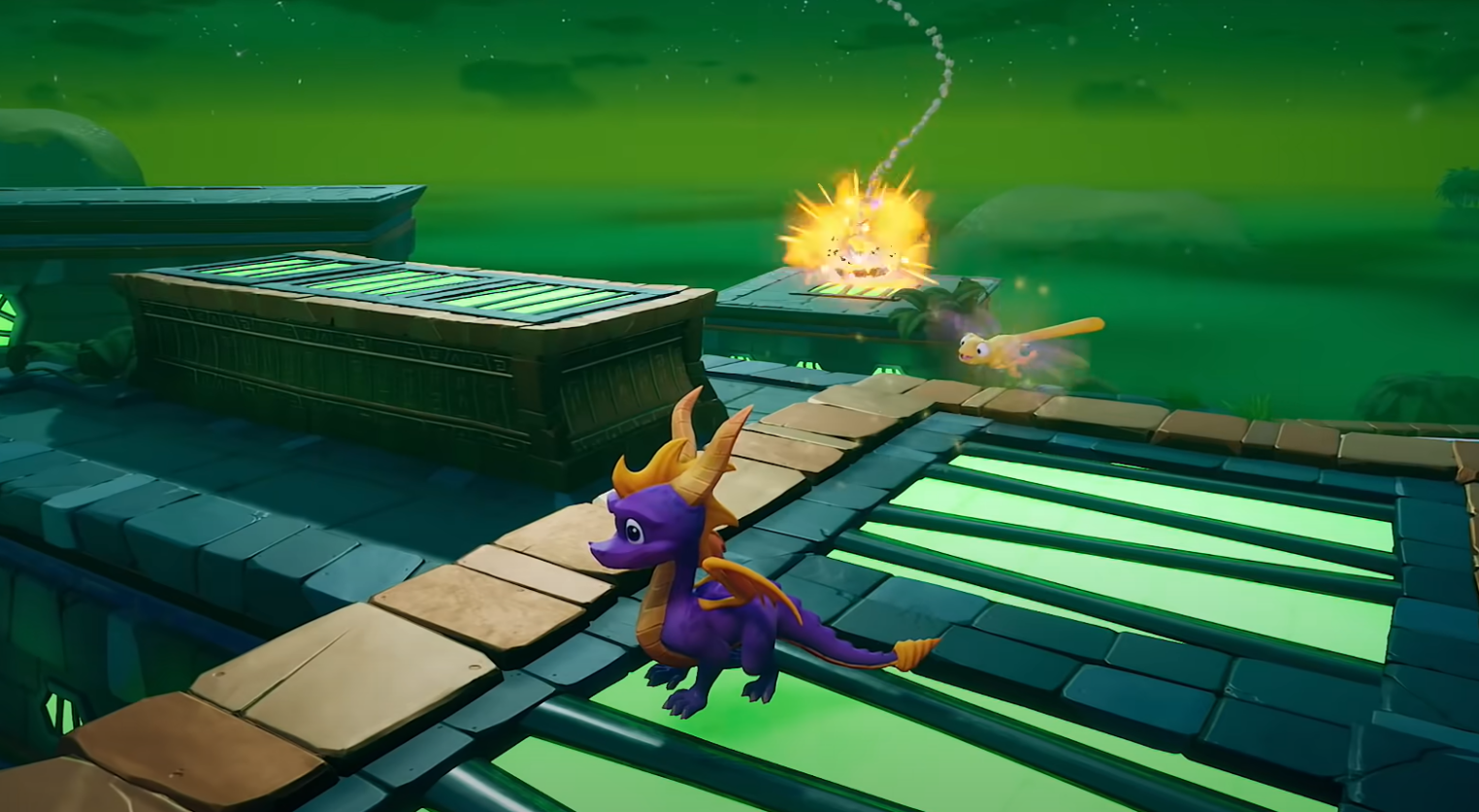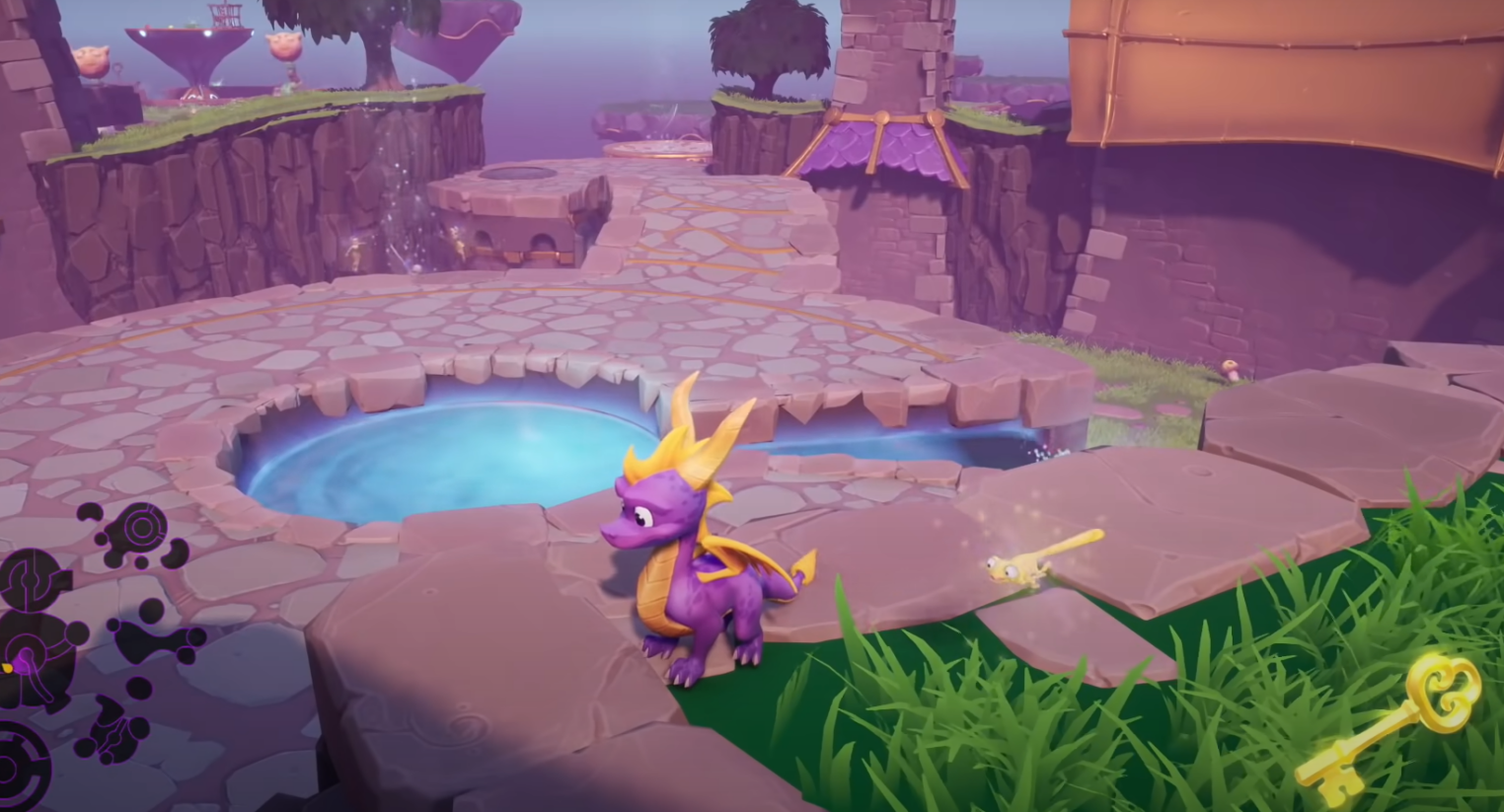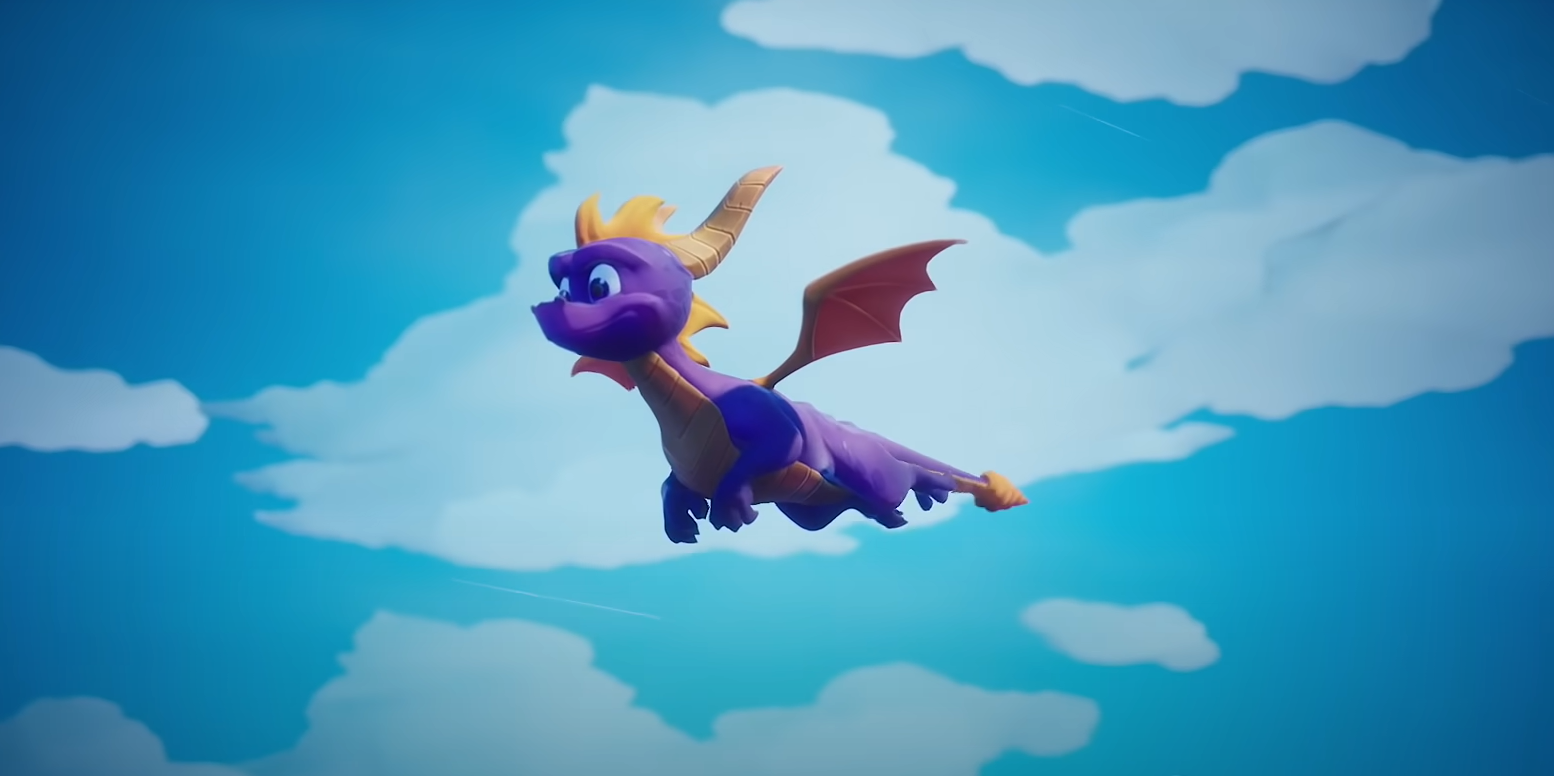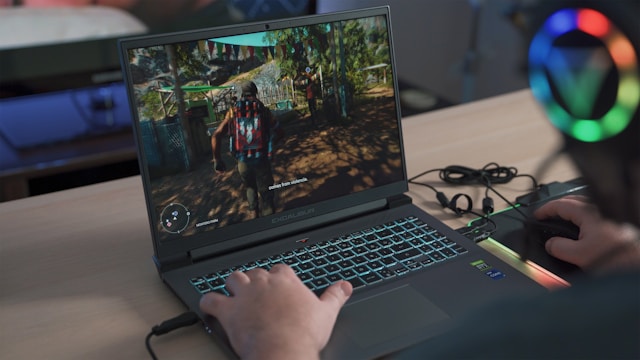I’d like to be a little wrong by saying that the classic Spyro games released by the notorious Insomniac Games (Ratchet and Clank, Resistance) are games with an open world. After the narrow, linear and cramped levels in Crash Bandicoot, getting into the world of Spyro you get naturally lost and very quickly start wondering: Where to run? What to do? Am I going in the right direction? Is this the first level or the hub? And so slowly recovering from the shock you realize that this green clearing filled with sheep, small enemies and entrances to the levels at the same time and the playground and the hub.
Still confused you jump into the nearest arch with a strange name and without loading screens Spyro reaches the next level, where you catch another shock. Because the new location is slightly smaller than the game hub. And you’re back to wondering “where to run” and “what to do.
The Legendary Spyro the Dragon

The levels (not counting the hub) are extensive, but linear. There is always one road ahead with minimal branches. But it is the breadth, vastness and multi-level locations at first that can make you get lost and lead to, what they call, wandering in three pines (note my girlfriend, whom I first put on the console and who has no experience with games). However, some segments of the levels can be skipped altogether, sometimes overlooked, and quietly complete the playthrough.
How did it all start?
In a quiet and magical world where dragons live in an interview with them, in which they make ugly remarks about Gnasty Gnorc’a calling him a nasty person. Gnorc, in turn, gets offended and turns all dragons, except for the main character, into statues, and Spyro, who is not hit, immediately rushes to remedy the situation.
That’s it. That’s the whole plot.
This is going to sound weird, but even in the first Crash, the plot and lore are far more elaborate. But it’s not a stone to the writers from Insomniac games. The story in Spyro is as background as possible, because the main thing is the gameplay.
What can our purple friend do?
There’s not much Spyro can do in the first game. The only thing he can do is dash forward, which allows him to crash into enemies with his forehead, breathe fire, glide on his little wings, and somersault left and right. Gliding is one of the most interesting mechanics, because the game is full of high platforms, where you can fly to inaccessible places.
Spiro himself is quite resilient and can withstand as much as three hits before he casts his paws away. The developers are very creative in their approach to the depiction of the life of the protagonist. Here this marker is the dragonfly Sparks – Spyro’s best friend. After the third strike Sparx disappears and Spiro is left defenseless, and to replenish health he needs to find sheep or other neutral creatures on the level. After annihilating them, a butterfly flies out, which Sparx eats with a characteristic sound, which replenishes his health for one hit. If you eat ten of these butterflies, Spyro gets one life. Yes, the game has a life counter, but you don’t have to worry about it at all. Spyro’s a lively one, and neutral creatures are reborn very quickly. So getting all the lives down to zero and seeing the gameover screen is extremely problematic.
How is the game played?
As stated above, the goal of the game is to save the congeners and defeat the Gnork. On each level (including the hubs) you can find several dragon statues to be rescued. However, it is not necessary to rescue all of them, but only a certain number needed to move to new hub-zones and accordingly the levels. As you understand, the game has a little secret associated with the collection of all the crystals and dragons.
Speaking of crystals. There are hundreds of colored stones of varying value scattered throughout each level, and Spiro, as befits a dragon, is in charge of collecting them. Or rather Sparx does. Being in the immediate vicinity of the crystal, he flies up and collects the gem himself, thus eliminating the need to run through it.
Not all crystals are easy to collect, and sometimes you have to “expand your mind” and convince yourself that you have to climb this wall, behind which there are whole unexplored playing fields, and you thought it was impossible to get there. This game design is reminiscent of 3D Mario, when you climb what you think is beyond the game locations, but then realize that the developers are actually geniuses and have foreseen your curiosity. And there are plenty of such nooks and crannies in the game.

The levels are what Insomniac has always known how to do in all their games. They are so thematically different that it is amazing how they have the imagination for each new game. Although the first part gravitates toward all things medieval, each level is visually radically different. You would never confuse a level in a night library, an ice cave, or a small village surrounded by a swamp. The second hub in general (it seems) is one big reference to the American Civil War.
In addition to the platforming levels, each hub contains one, let’s call it a flying level. Spyro spends the whole episode in the air and tries to complete the four goals set before the timer runs out: fly through all the rings, fry enemies flying or floating, light all the beacons, and so on. However, for each lighthouse, each ring, and each fried enemy, a few seconds of extra time is given.
These levels are the largest and most non-linear in all of Spyro The Dragon, but even they have their own route, flying through which you can complete all the objectives and collect all the crystals in one go.
And completing the variety of locations are levels with bosses. In contrast to the sequel and threequel the local bosses are primitive and easy to outrage. All you have to do is catch up and fry three times in a row. But then again, the boss levels in the original are full-fledged locations with enemies, dragon statues and crystals, rather than the usual arenas of the sequel and threequel.
Conclusion
Spyro the Dragon is good and varied, especially for the first game in the series, but like the first Crash Bandicoot, it is essentially a springboard before unlocking its potential. Spacious levels, enjoyable gameplay and an abundance of secrets make the game very interesting and replayable, and the soundtrack only better sets the mood for adventure.



